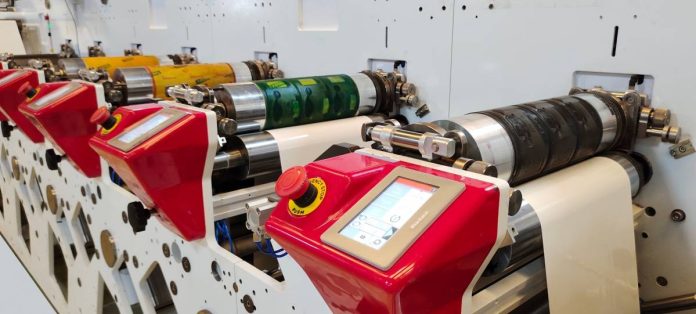
While the global industry continues to innovate, add value to labels and grow at fairly high rates that are above GDP growth in most countries, several trends are emerging that could potentially shake up this industry structurally. For the last 20 years, narrow web flexo presses from the five leading European and American manufacturers have proliferated in addition to the narrow web letterpress machines from Japan, China, and Taiwan. In Thailand, for instance, there are more than a hundred label presses installed just in the vicinity of Bangkok. There is still room to grow since many large Asian countries have not yet even reached the level of per capita label consumption in Indonesia.
In a rough back-of-the-envelope calculation, we estimate that about 1,500 to 2,000 new label presses are installed each year globally – from approximately 20 to 30 manufacturers. Of these, about 300 to 400 are likely to be digital and hybrid label presses from various manufacturers, with HP being the largest player in this segment.
However, the global manufacturers of label presses are increasingly finding it difficult to sell conventional narrow web flexo presses when they are faced with competition from strong Asian manufacturers such as India, which is emerging as a high-technology producer of machinery and components for defense, space and automobiles. It has several label press manufacturers, including the long-established Nilpeter factory near Chennai in South India. Another seven label press manufacturers have emerged, who like Nilpeter India see the whole world as their market. They are looking beyond the South Asian subcontinent or emerging economies for their highly configured machines that extend to digital and hybrid presses as well.
In a recent conversation with Amit Ahuja of Multitec, which together with Nilpeter India remains the leading exporter of Indian-made flexo label presses, we discussed the global scenario and dynamics of the industry from his well-traveled point of view. He said that while label printers may be proliferating in the country, they are keen to scale up their operations, and the natural progression for them seems to be to go into flexible packaging where the margins may be thinner but the volumes are generally much higher.
While this is a tempting avenue for growth, one of the flexible packaging trends is for shorter runs and this presents a good opening for flexo presses that are no longer narrow – increasingly they are 17, 22, or even 26 inches wide, making them mid-web presses. Another trend that is becoming visible is the use of in-line flexo presses for printing cartons, but some industry observers feel that is not a trend that is likely to gain traction, at least in markets such as India, although several machines have been installed for this purpose.
For Multitec, 17 and 22-inch wide presses are the default option nowadays generally intending to enter flexible packaging. Ahuja suggests that another impetus for label converters shifting to flexibles are the unfavorable payment terms of label customers who sometimes take up to six months to pay. This is in comparison to flexible packaging buyers who pay within 15 to 30 days of delivery in what is practically a cash-and-carry business.
He says that moving to flexibles also fits in with their turnover aspirations. “Not every business moving to flexible packaging can move to a gravure or CI flexo press as easily as they can to an in-line mid web flexo press,” adding, “Increasingly, we are giving inline flexo trials to customers on 12 micron PET films.”
Looking at the various global trends, Ahuja admits that the North American label market (Canada and the US) has shifted largely to digital presses. He sees Europe as a ‘watch-and-wait’ market that is a bit wary of which digital developments will ultimately perform efficiently in the long run. Another irritation or hindrance with digital presses is the necessity of buying inks from the press manufacturer which is a necessity to optimize inkjet head performance and the various substrate and quality requirements. He also cites the re-emergence of intermittent rotary offset presses at the last Labelexpo in Brussels, where the number of such machines displayed multiplied by a factor of 3 or 4 from the previous event. However, here he sees the limitation of these presses in terms of speed.
Multitec’s label press exports after being a six-time exhibitor of running presses at Brussels are now penetrating the advanced global markets with highly configured flexo presses that offer the sophistication and options for double layer labels, and delam, relam and multiple foiling units on 10 and 12-color presses. Ahuja says the company’s latest export installations and orders are for discerning label converters in Hungary, Switzerland, Germany and South Africa.









